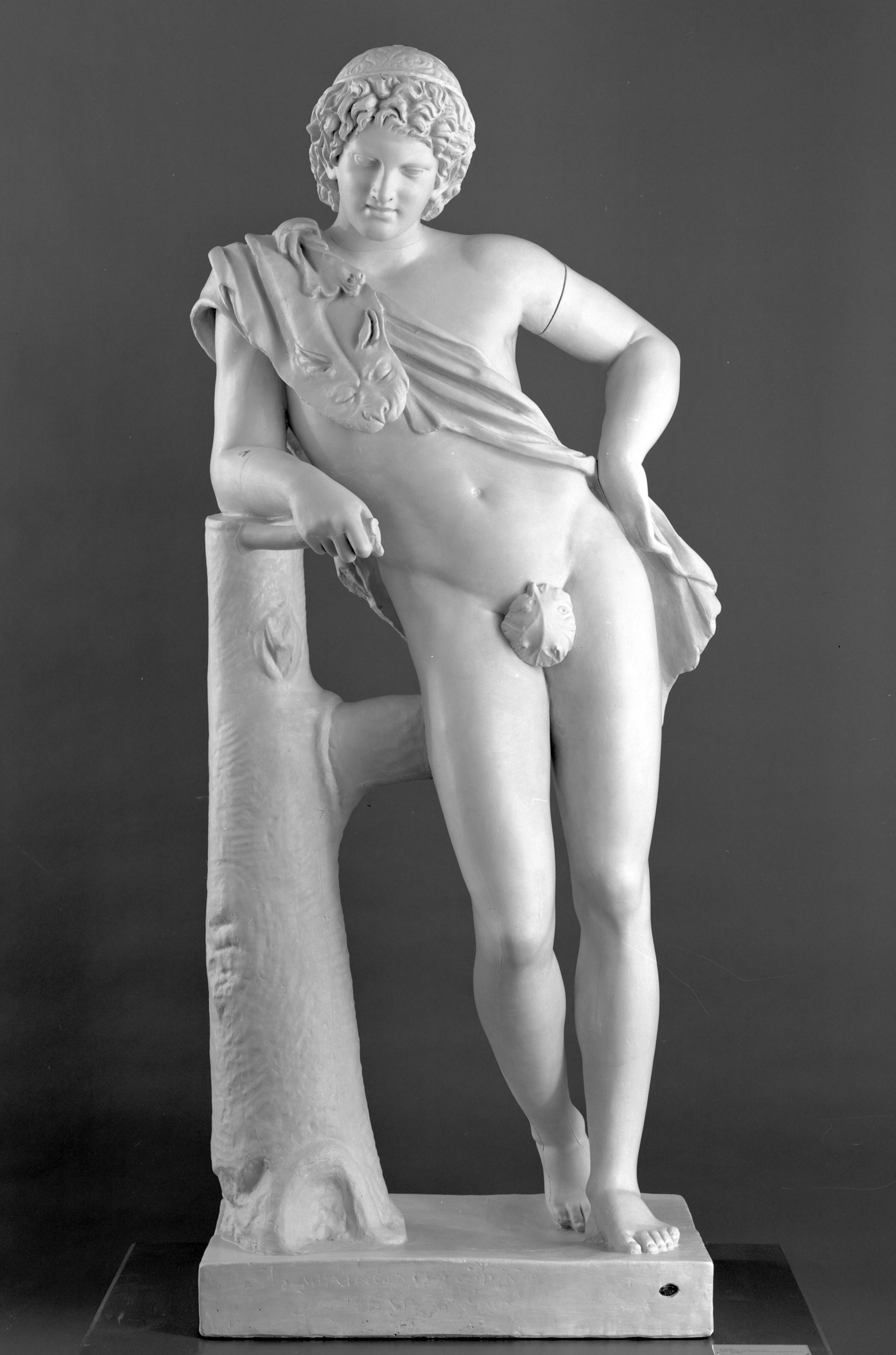History
This youth, leaning against a tree trunk and shifting his weight into the elegant contrapposto familiar from many of Praxiteles’ artworks, is identifiable as a satyr by the pointed ears emerging from his curled mane and the panther pelt draped across his body. Over 100 copies of this statue type are known from across the Mediterranean world, suggesting the immense popularity of the original in antiquity. This popularity continued into the Modern era following its rediscovery: it inspired the 1860 novel, The Marble Faun, by American author Nathaniel Hawthorne, which was adapted into an opera in 1996.
Notably, the cast Resting Satyr acquired by Battle in 1903 has a fig leaf modestly covering his groin. This leaf was added to the Roman marble copy that was once part of the Papal art collections, and which Pope Benedict XIV gave to the Capitoline Museum in 1753. While the leaf was eventually removed by the museum, Battle’s cast maintains it as a memory of his modest past.
At UT, the Resting Satyr has often held positions befitting its lasting popularity. Soon after the cast was acquired it was displayed on the fourth floor of the old Main Building, alongside several other casts in a space referred to as the “Museum of Ancient Art” in university records. Having been moved to the Old Library (now Battle Hall), the Resting Satyr occupied a front-row-center position during the casts’ display for the 1936 University Centennial Exhibition. The next year the cast was installed on the third floor of the new Main Building. Sometime after 1951 it was transferred to the Classics Department, where its location was listed as “not identified” during a 1974 inventory. During its missing period, the cast sustained damage to the front of its base, as noted on the late 1970s condition survey. Recently, the Resting Satyr returned to a place of glory when it was displayed alongside other casts of iconic artworks in the second floor rotunda of the Blanton Museum of Art in 2006. Today, the cast is in storage at the Blanton.
